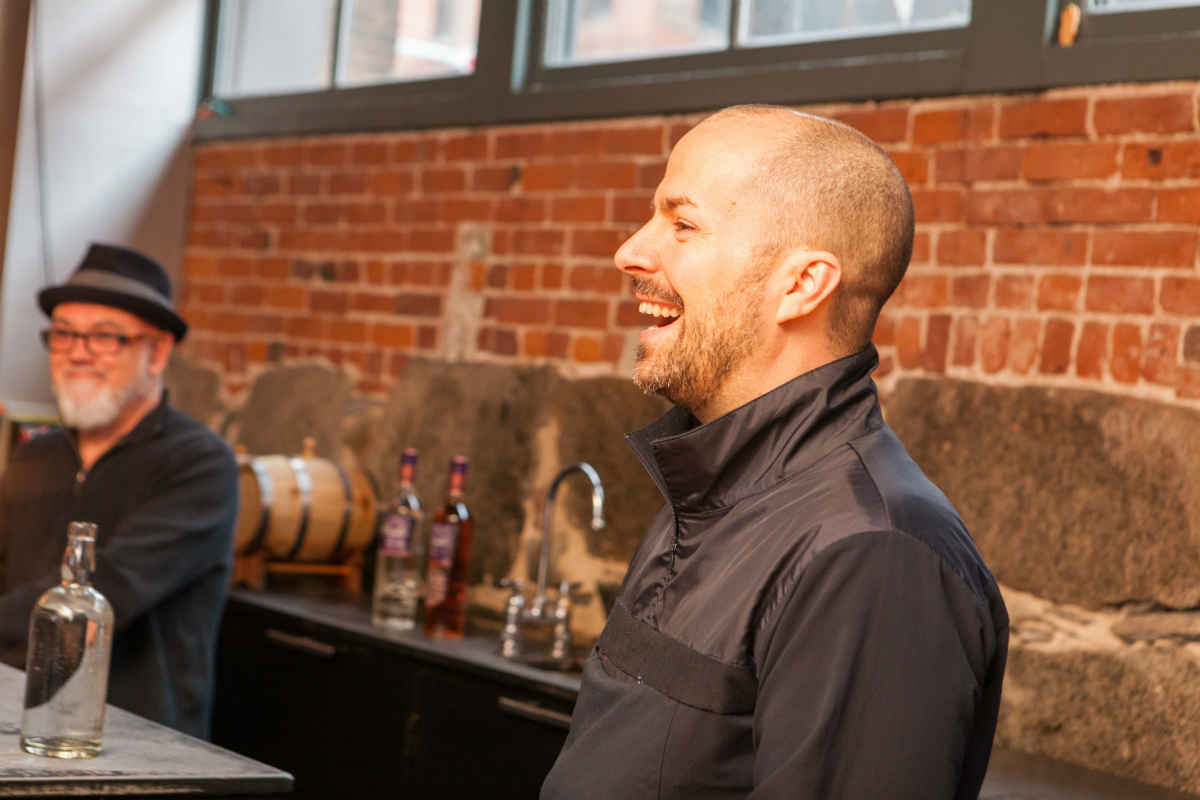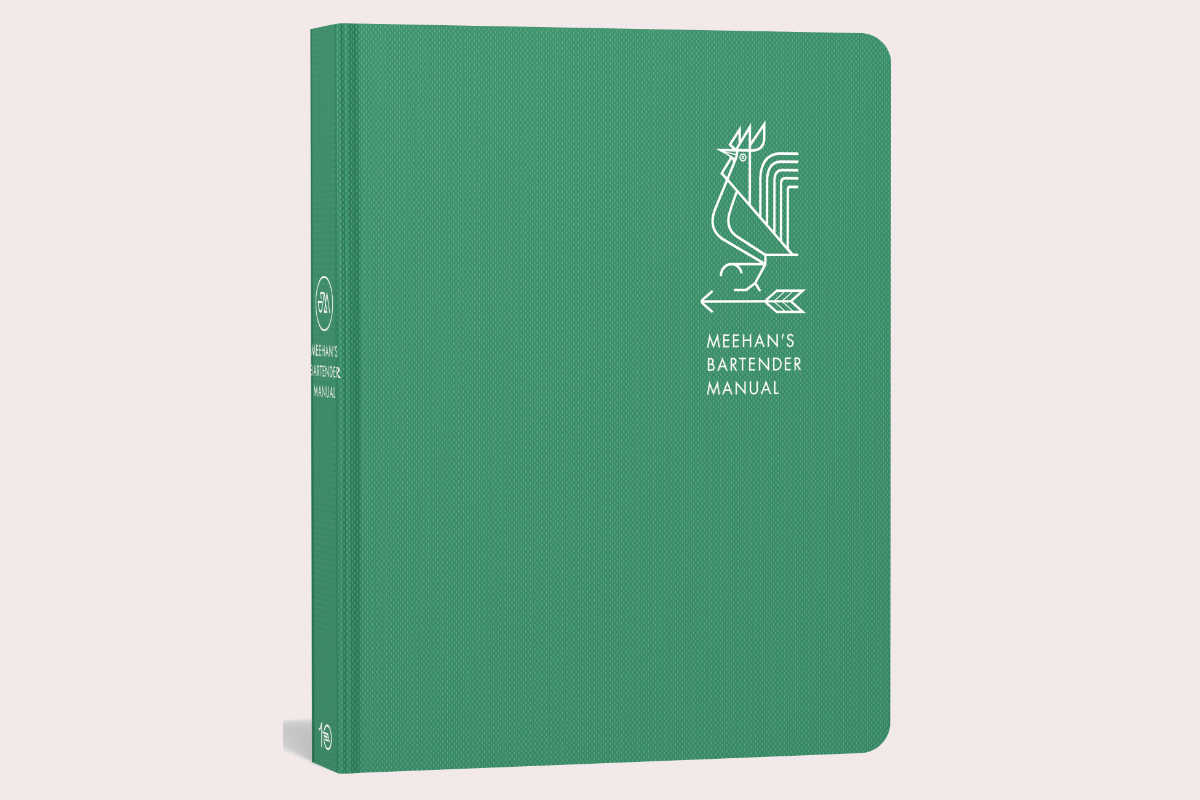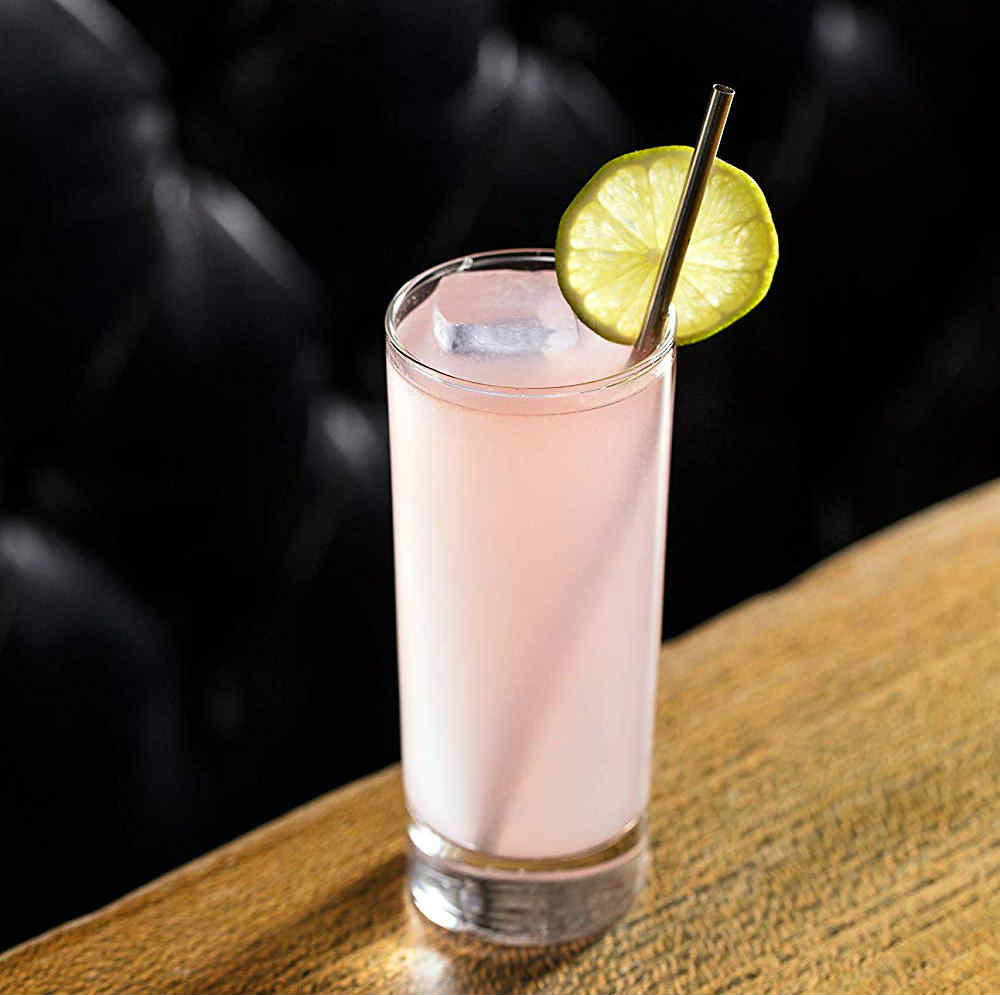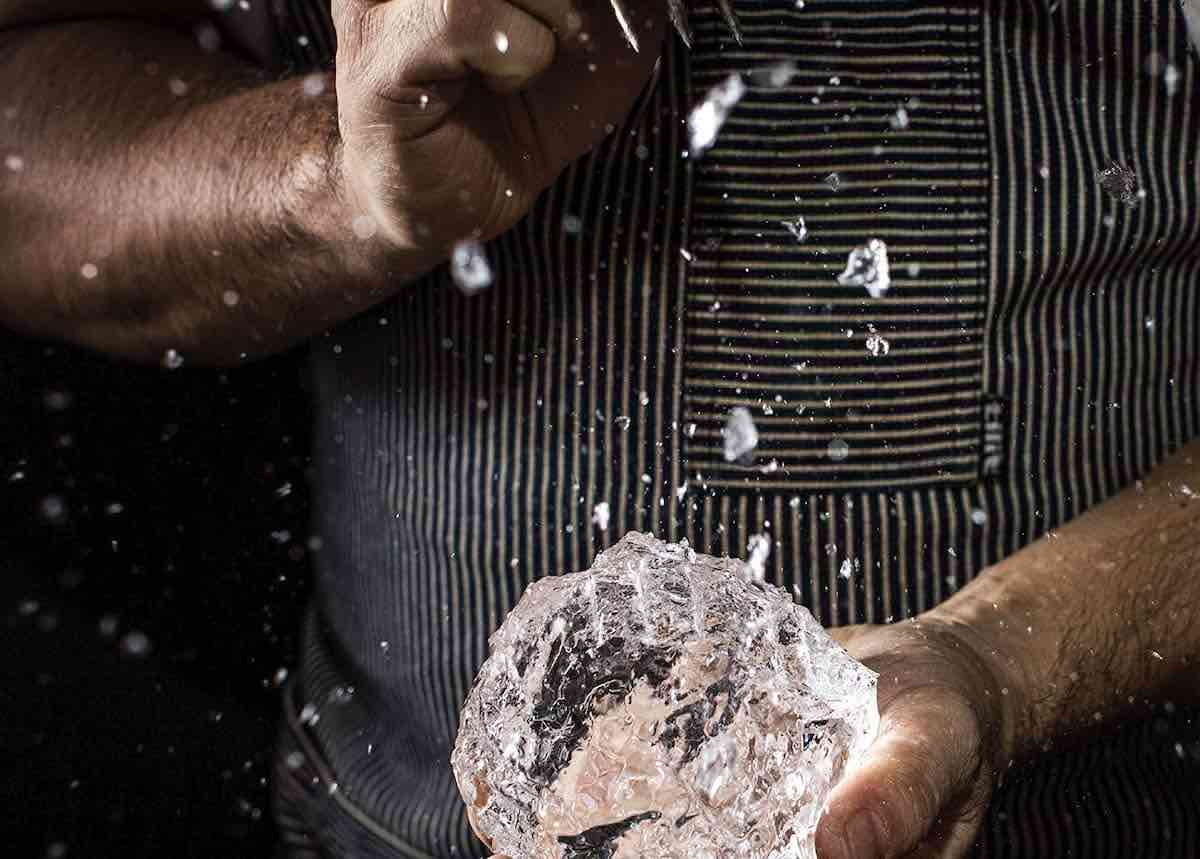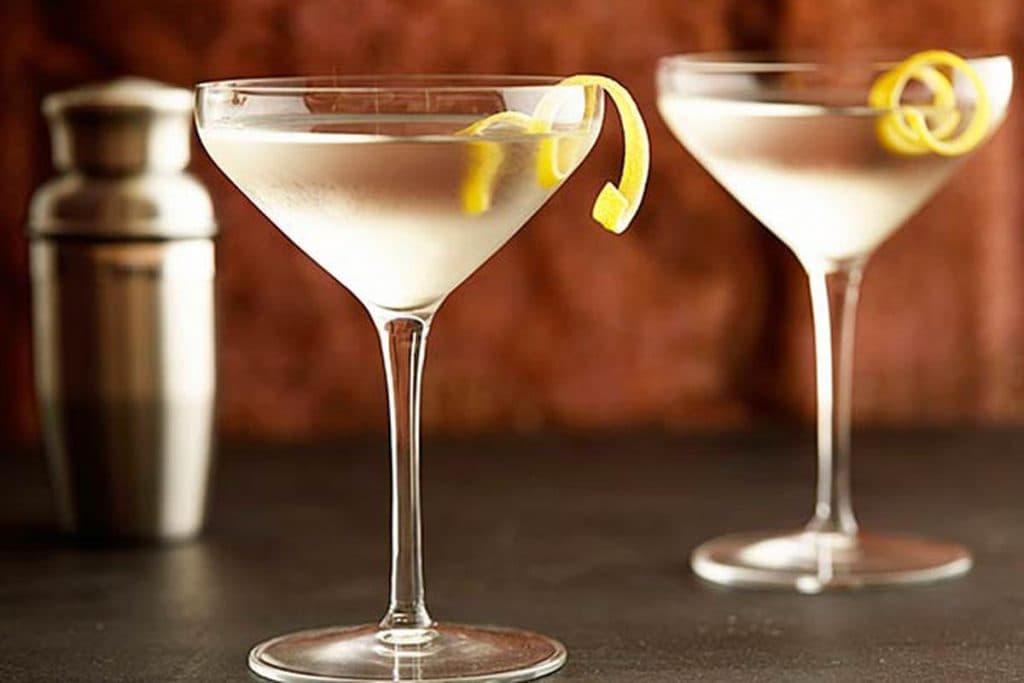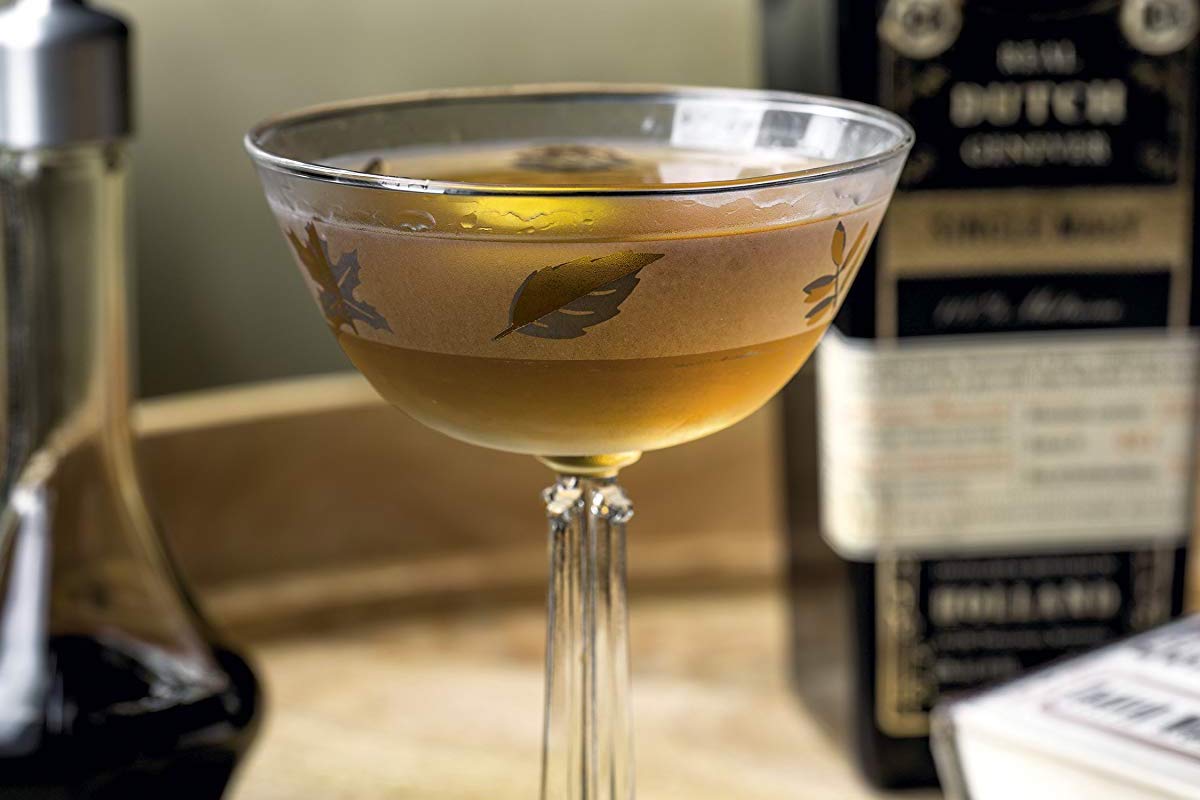While attending Thirst Boston this past April, we had the chance to join an intimate conversation on the origins and history of rum punch, delivered by Jim Meehan and Brother Cleve at Boston cocktail bar, Drink. Afterward, we spoke to the PDT-founder, Banks Rum co-founder, and Meehan’s Bartender Manual author about his next book, why he’s betting on punch, and if the clock can ever be turned back on the cocktail renaissance.
This interview has been condensed and edited for clarity.
ET: What inspired you to write Meehan’s Bartender Manual?
JM: Even though “products” is a terrible word to describe a book, a book is a consumer packaged good. It is a product. And there are styles of books, just as there are styles of rum. The house cocktail book, with The Savoy Cocktail Book being the most famous, was the concept for The PDT Cocktail Book. As for Meehan’s Bartender Manual it was a sort of hybrid of Harry Johnson [Harry Johnson’s Bartender Manual] and Charles Mahoney [Hoffman House Bartenders Guide], and then a little bit of Grossman’s Guide to Wine, Beer, and Spirits—which is more of a wine and spirits encyclopedia for distributors—and then a little bit of Danny Meyer’s Setting the Table.
I’m currently working on another book proposal—I can’t give it all away—and I’m using some 1960s and ‘70s regional American cookbooks for inspiration. For me, all of my projects are about looking back in history and trying to channel what is relevant now, based on what was once relevant then.
Can you say anything more about your new book at this time?
If I had sold it, I would tell you, but it’s not quite there yet. But it’ll have recipes in it—I’ll leave it at that. It will be mixed drink focused.
In the book you mention how 10-15 years ago the hard part was finding information. Now with the Internet there’s too much information and it’s hard to find what is true.
The biggest concern I have is curiosity waning. Because information was so scarce, finding it required curiosity… now that there’s so much information you actually have to piece through it and try to figure out what you should trust, or what you should be concerned about.
Right now we are living through a golden age for cocktails. Ten years ago, you couldn’t find things we now take for granted. Do you think the clock can ever be turned back again?
One hundred percent. Look at what happened with our country during Prohibition, we have that in our history. We demonized drinking and decided this was a terrible thing and then got rid of it for 16 years. We’ve done that before. History can repeat itself if we’re not aware of how we got there.
I have a feeling that as more people start tinkering around with home entertaining, they will really realize that punch is such a useful and great application.
What’s your take on the current state of cocktail books?
We had a bumper crop this year. The Cocktail Codex was just recognized as the best book at the James Beard Awards. I think The Aviary Cocktail Book is sort of the Modernist Cuisine of cocktail books, and there are also single subject books like Kate Hawking’s Aperitif. Derek Brown just brought out a really cool book [Spirits, Sugar, Water, Bitters: How the Cocktail Conquered the World]. There’s a lot out there.
David Wondrich has been compiling The Oxford Companion to Spirits and Cocktails for years. That hopefully will be out next year or the year after. That is the book that I’m most excited to read.
Can you tell me more about that?
It’s literally Oxford [University Press]. In the way that there’s The Oxford Companion to Beer that Garrett Oliver did, or Jancis Robinson’s Oxford Companion to Wine. David Wondrich was the editor-in-chief of spirits and cocktails. He’s been working on this for years. This will be a big deal.
Are there any great cocktail books that have fallen under the radar?
A colleague of mine, Michael Madrusan, who’s based in Melbourne now, wrote a great cocktail book that I don’t think got its due. He and his partner wrote A Spot at the Bar. It’s fantastic. There are certainly others, but that’s the one that I’ve looked back and been like, “wow.” I also feel like it’s not just cocktail books. David Broom’s book on Japanese whisky [The Way of Whisky: A Journey Around Japanese Whisky] was another book that I thought should have gotten more love than it did as far as awards season.
You recently went on a tour with Cocktail Kingdom’s Greg Boehm…
Greg and I have done a few different historic cocktail book talks. We did one in Pittsburgh and Montreal, and we just did one in New Orleans. It’s been fun, because how we met was collecting cocktail books.
Do you and Greg have any more talks planned?
I’m trying. Greg has Cocktail Kingdom, and he has four or five bars now so he’s a busy guy. I’m trying to get him to commit to a couple more. He mentioned Vancouver and I’d like to do San Diego, so I’m hoping that Vancouver and San Diego might be the next ones up. It’s sort of an informal arrangement, where when Greg feels like it we head out on the road.
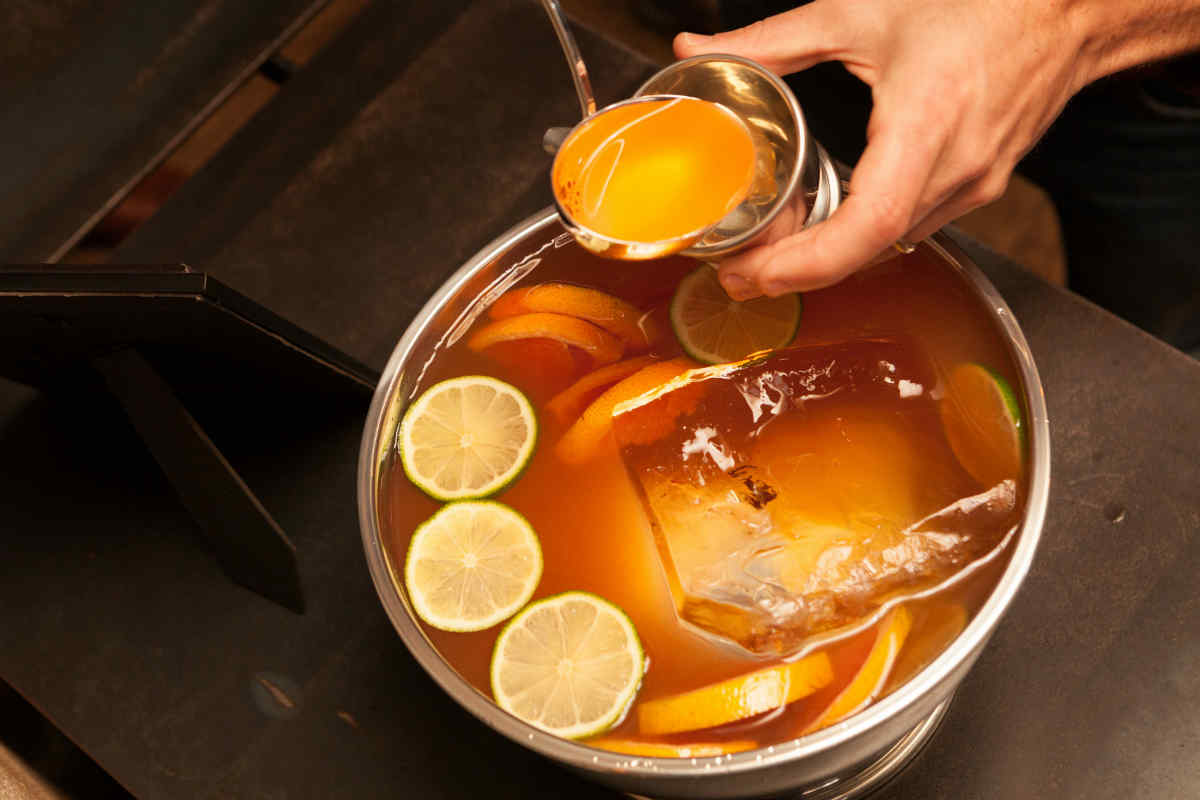
Rum Punch. Photo: Conor Sumner.
What’s new in the world of Banks Rum?
Punch has been our strategy since 2009, before we launched… I feel like we’re on the cusp of punch being a thing, in the same way that maybe the Aperol Spritz has, or the St. Germain Cocktail, or other popular serves. We don’t really have anything new—we have something very old in punch. I have a feeling that as more people start tinkering around with home entertaining, they will really realize that punch is such a useful and great application.
Punch still feels like a cocktail-nerd thing. Now every one of my friends like Negronis, whereas 10 years ago that was the nerd thing. Punch still feels that way, a little bit.
That’s what’s interesting about this industry. It’s a lot like fashion… I try to anticipate what the fashions will be. All of my fashion sense, or all of my historical instincts, lead me to believe that punch will be back sooner than later.
I think session drinks are what’s popular now. I feel that it’s logical that as people become more interested in session cocktails, they will be interested in lower-ABV options like punch.
What trends in the bar world today are taking things in the right direction?
The Whiskey Highball—mostly the Japanese whisky highball—is very popular. If you look at it it’s whiskey and soda, and it’s a long, low-ABV drink. Punch is also an incredibly long, low-ABV drink. I think session drinks are what’s popular now. I feel that it’s logical that as people become more interested in session cocktails, they will be interested in lower-ABV options like punch.
What trends do you find distressing?
Cleve mentioned during our talk there’s an ahistorical bent of bartenders… the things that I don’t take for granted are things that contemporary, working, everyday young bartenders totally take for granted. It’s hard to teach people, or to encourage people to be grateful for something they never lacked. But one of the reasons why I get up and tell stories like Cleve and I did today is to remind people that yes, 2005 was 15 years ago, but it wasn’t that long ago that we just didn’t have these nice things.
To your earlier point, the clock can be turned back. If it can be taken for granted, it can be lost.
Exactly. We’re doomed to repeat portions of history that didn’t go well for anybody when we don’t know history. History isn’t just 1862, Boardwalk Empire stuff, it’s what happened two years ago, what happened five years ago, what happened 10 years ago. My book, Meehan’s Bartender Manual, mentions in the history chapter about how history starts by finding out who opened your bar and what’s the history of your own bar, the bars on your block, the bars in your city, the bars in the country, and the bars in the world. So, history doesn’t have to be so far-reaching and broad. History doesn’t have to be ancient. It can be contemporary and modern.
What cocktail are you enjoying now?
One of the signature drinks that I came up with at Banks was called the Five Island Flamingo, and it was Banks 5 Island Rum with Ting. I was linking the Jamaican pink grapefruit soda with the Jamaican component of the rum. And what I found when I tried to take it on the road is that the only thing harder to find than Banks when we just brought it out was Ting. It’s a very esoteric thing you’ll only find where there are Jamaicans. So, when I met [one of East Imperial’s founders] in Singapore, I was like, “Would you ever consider making a grapefruit soda?” and we kept the conversation going. In the last couple years I’ve been working on a grapefruit soda and it just came out. I will be drinking a lot of Five Island Flamingos with my own grapefruit soda instead of Ting.
What else goes into the Five Island Flamingo?
Ting is quite sweet, so I usually just add lime, almost like a Cuba Libre. But the soda that we came out with is quite dry, so it’s just Banks 5 Island and [East Imperial] grapefruit soda. You garnish it with a lime. [Get the Five Island Flamingo recipe.]
Where is East Imperial’s grapefruit soda currently available?
We’re starting with Florida, California, Illinois, Texas and New York. It’ll trickle out into the rest of the country hopefully later this year.
What are your favorite bars in Portland?
The old standbys are Clyde Common and Pepe Le Moko, which Jeff Morgenthaler started, and then Teardrop Lounge from Daniel Shoemaker. And I’m a big fan of the Multnomah Whiskey Library. It’s this big, beautiful member’s club that has a giant whiskey library. It’s awesome. And then Naomi Pomeroy’s husband Kyle Webster has a bar called Expatriate across the street from Beast, which is great. Ricky Gomez just opened a bar called Palomar, which is also excellent. Tyler Stevens opened up a bar called the Pink Rabbit right around the corner from Teardrop Lounge. I would say the new adds are Palomar and Pink Rabbit.
